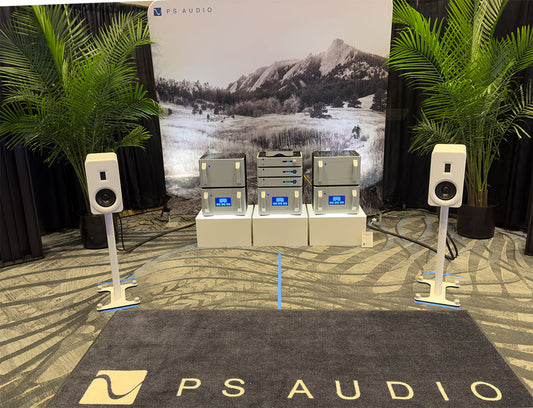 The frequency response appears to be all over the map (it is). With a bit of experience, you learn to see the general averaging trend and ignore the dips and bumps (most programs offer various levels of smoothing or averaging). Still, how do you accurately relate what you see to what you will eventually hear in your room and on the musical choices you play?
Perhaps even more important is the question, is flat what you want for an in-room response?
In my experience, you want the lowest frequencies, say from 35Hz and down to be up a few dB relative to the average.
In fact, the easiest way to figure all this out is not with charts and graphs but by simply listening.
One of my favorite tracks is Boz Scaggs Thanks to you. As the keyboardist hits the lowest note is it the same level as the others? Or, is it missing altogether? Or, another oldie but goody is from the album Hourglass by James Taylor. The track is Gaia. About 2/3 the way into the track there's a musical bridge where the bass and drums should rattle the room at the same level as the song itself. On most systems, this is less than exhilarating. Wimpy, in fact.
At the end of the proverbial day what you're looking for is an even in room low-frequency response that is nearly always available only to those with an added subwoofer.
Have a listen and see where you stand.
The frequency response appears to be all over the map (it is). With a bit of experience, you learn to see the general averaging trend and ignore the dips and bumps (most programs offer various levels of smoothing or averaging). Still, how do you accurately relate what you see to what you will eventually hear in your room and on the musical choices you play?
Perhaps even more important is the question, is flat what you want for an in-room response?
In my experience, you want the lowest frequencies, say from 35Hz and down to be up a few dB relative to the average.
In fact, the easiest way to figure all this out is not with charts and graphs but by simply listening.
One of my favorite tracks is Boz Scaggs Thanks to you. As the keyboardist hits the lowest note is it the same level as the others? Or, is it missing altogether? Or, another oldie but goody is from the album Hourglass by James Taylor. The track is Gaia. About 2/3 the way into the track there's a musical bridge where the bass and drums should rattle the room at the same level as the song itself. On most systems, this is less than exhilarating. Wimpy, in fact.
At the end of the proverbial day what you're looking for is an even in room low-frequency response that is nearly always available only to those with an added subwoofer.
Have a listen and see where you stand.
Here's a simple test
by Paul McGowan
Whenever the subject of filling in missing low frequencies comes up I am often asked how do you know what's missing?
Certainly one can perform a series of measurements at the listening seat. But how relevant are those measurements given they will never be flat?
Part of the problem with frequency response graphs is reading and interpreting them. Have a look.
 The frequency response appears to be all over the map (it is). With a bit of experience, you learn to see the general averaging trend and ignore the dips and bumps (most programs offer various levels of smoothing or averaging). Still, how do you accurately relate what you see to what you will eventually hear in your room and on the musical choices you play?
Perhaps even more important is the question, is flat what you want for an in-room response?
In my experience, you want the lowest frequencies, say from 35Hz and down to be up a few dB relative to the average.
In fact, the easiest way to figure all this out is not with charts and graphs but by simply listening.
One of my favorite tracks is Boz Scaggs Thanks to you. As the keyboardist hits the lowest note is it the same level as the others? Or, is it missing altogether? Or, another oldie but goody is from the album Hourglass by James Taylor. The track is Gaia. About 2/3 the way into the track there's a musical bridge where the bass and drums should rattle the room at the same level as the song itself. On most systems, this is less than exhilarating. Wimpy, in fact.
At the end of the proverbial day what you're looking for is an even in room low-frequency response that is nearly always available only to those with an added subwoofer.
Have a listen and see where you stand.
The frequency response appears to be all over the map (it is). With a bit of experience, you learn to see the general averaging trend and ignore the dips and bumps (most programs offer various levels of smoothing or averaging). Still, how do you accurately relate what you see to what you will eventually hear in your room and on the musical choices you play?
Perhaps even more important is the question, is flat what you want for an in-room response?
In my experience, you want the lowest frequencies, say from 35Hz and down to be up a few dB relative to the average.
In fact, the easiest way to figure all this out is not with charts and graphs but by simply listening.
One of my favorite tracks is Boz Scaggs Thanks to you. As the keyboardist hits the lowest note is it the same level as the others? Or, is it missing altogether? Or, another oldie but goody is from the album Hourglass by James Taylor. The track is Gaia. About 2/3 the way into the track there's a musical bridge where the bass and drums should rattle the room at the same level as the song itself. On most systems, this is less than exhilarating. Wimpy, in fact.
At the end of the proverbial day what you're looking for is an even in room low-frequency response that is nearly always available only to those with an added subwoofer.
Have a listen and see where you stand.
 The frequency response appears to be all over the map (it is). With a bit of experience, you learn to see the general averaging trend and ignore the dips and bumps (most programs offer various levels of smoothing or averaging). Still, how do you accurately relate what you see to what you will eventually hear in your room and on the musical choices you play?
Perhaps even more important is the question, is flat what you want for an in-room response?
In my experience, you want the lowest frequencies, say from 35Hz and down to be up a few dB relative to the average.
In fact, the easiest way to figure all this out is not with charts and graphs but by simply listening.
One of my favorite tracks is Boz Scaggs Thanks to you. As the keyboardist hits the lowest note is it the same level as the others? Or, is it missing altogether? Or, another oldie but goody is from the album Hourglass by James Taylor. The track is Gaia. About 2/3 the way into the track there's a musical bridge where the bass and drums should rattle the room at the same level as the song itself. On most systems, this is less than exhilarating. Wimpy, in fact.
At the end of the proverbial day what you're looking for is an even in room low-frequency response that is nearly always available only to those with an added subwoofer.
Have a listen and see where you stand.
The frequency response appears to be all over the map (it is). With a bit of experience, you learn to see the general averaging trend and ignore the dips and bumps (most programs offer various levels of smoothing or averaging). Still, how do you accurately relate what you see to what you will eventually hear in your room and on the musical choices you play?
Perhaps even more important is the question, is flat what you want for an in-room response?
In my experience, you want the lowest frequencies, say from 35Hz and down to be up a few dB relative to the average.
In fact, the easiest way to figure all this out is not with charts and graphs but by simply listening.
One of my favorite tracks is Boz Scaggs Thanks to you. As the keyboardist hits the lowest note is it the same level as the others? Or, is it missing altogether? Or, another oldie but goody is from the album Hourglass by James Taylor. The track is Gaia. About 2/3 the way into the track there's a musical bridge where the bass and drums should rattle the room at the same level as the song itself. On most systems, this is less than exhilarating. Wimpy, in fact.
At the end of the proverbial day what you're looking for is an even in room low-frequency response that is nearly always available only to those with an added subwoofer.
Have a listen and see where you stand.
- Choosing a selection results in a full page refresh.
- Opens in a new window.








